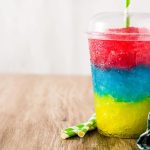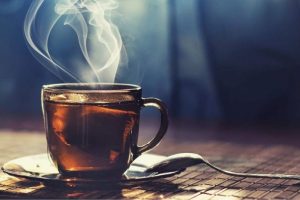If you’re like most people, you probably don’t think twice about grabbing a coffee on your way to work. But what about tea? Tea is the second most popular drink in the world, and it’s growing in popularity each year. I personally am a tea enthusiast and let me share why I love tea. Further, if you’re looking to become a tea enthusiast, here are a few tips to help get you started.

Contents
- 1 Why I Love Tea?
- 2 Meaning of Tea Enthusiast
- 3 How To Become A Tea Enthusiast/ Lover?
- 4 How To Drink Tea?
- 5 Tea Tasting Course
- 6 How To Like Tea?
- 7 How Tea is Made?
- 8 Camellia Sinensis vs. Herbal Tea
- 9 Flavored Tea vs. Flavorful Tea
- 10 Where Do You Start To Learn About Tea?
- 11 What Do You Call A Tea Enthusiast?
- 12 Best Tea For Beginners
- 13 Loose Leaf Tea vs. Tea bags
- 14 Conclusion On Becoming a Tea Enthusiast
Why I Love Tea?
There’s nothing quite like a good cup of tea. Whether you like it sweet or unsweetened, hot or iced, there’s a tea out there for everyone. I personally love tea because it’s such a versatile beverage. You can drink it any time of day, and it can be enjoyed in so many different ways.
Tea is also incredibly healthy for you. It’s packed with antioxidants and has been shown to improve heart health, lower cholesterol levels, and help with weight loss. So not only is tea delicious, but it’s also good for you!
If you’re looking to get started with drinking tea, I highly recommend giving it a try. There are so many different types and flavors out there, so you’re sure to find one that you love. And if you’re already a tea lover, then I hope this article has inspired you to try some new varieties!
Meaning of Tea Enthusiast
A tea enthusiast is someone who is passionate and knowledgeable about different types of tea and the art of brewing and drinking tea. They are interested in exploring various tea blends, regions, and brewing methods, and they may spend a significant amount of time and money on tea-related products and experiences.
How To Become A Tea Enthusiast/ Lover?
I am myself a Tea Enthusiast and love to brew and enjoy different flavors. Staying around the tea gardens have given a push to my love for tea. Believe me, its not just about losing yourself in the tea gardens, but it is all about brewing it, knowing it and serving in the perfect tea accessories. Below are the things I did which made me a tea enthusiast. If you want to become one, consider the steps below:
Experiment with Different Tea Varieties
Start by trying a wide range of tea types, including green, black, oolong, white, and herbal teas. This will help you understand the different flavor profiles and determine which teas you prefer.
There are hundreds of different types of tea, so it’s important to start by trying a few different kinds. Once you find a couple that you like, you can start exploring those varieties in more depth. There are many online resources that can help you learn about different types of tea, so don’t be afraid to do some research.
Learn About Tea Culture and History
Tea has a rich cultural history that spans centuries and continents. Read books, watch videos, or take classes to learn about the different tea-drinking traditions and customs around the world.
Invest in Quality Tea
To fully appreciate the flavors and aromas of tea, it’s important to use high-quality loose-leaf teas. Consider purchasing teas from reputable suppliers, as well as investing in a good tea strainer, teapot, and cups.
Brew Tea Correctly
Each type of tea requires different brewing temperatures and steep times to produce the best flavor. Research the correct brewing techniques for each tea, and experiment with different methods to find what works best for you.
Join Tea Communities
Attending tea events, joining online forums, or following tea experts can help you connect with other tea enthusiasts and learn from their experiences. This can be a great way to share your own knowledge and explore new tea varieties.
Also, joining a tea club is a great way to meet other tea enthusiasts, and to learn more about different types of tea. Most clubs will have monthly meetings where members can share their latest findings, and many also offer tastings and educational events.
Experiment with Tea Pairings
Just like wine, tea can be paired with different foods to enhance the overall experience. Try different tea and food combinations, such as green tea with sushi or black tea with scones, to find your favorite pairings.
Travel to Tea-Growing Regions
Visiting tea gardens and attending tea ceremonies in tea-growing regions can provide a unique and immersive experience. This is a great opportunity to taste local teas, learn about tea-making techniques, and meet local tea producers.
By following these steps and dedicating yourself to the exploration and appreciation of tea, you’ll be well on your way to becoming a true tea enthusiast. Just remember to take your time, and to have fun along the way. Happy brewing!
How To Drink Tea?
Different types of tea call for different steeping times and temperatures, so it is important to know what you are doing before you begin. In general, however, there are a few basic rules that apply to all types of tea.
- First, make sure that your water is at the correct temperature. If it is too hot, it will scald the leaves and produce a bitter brew. If it is not hot enough, the tea will be weak and flavorless.
- Second, use fresh water whenever possible. Tea leaves can absorb impurities from tap water, so using filtered or bottled water will usually produce a better cup of tea.
- Third, be aware of the size of your teapot or cup. If you are using a teapot, make sure to fill it no more than halfway so that the leaves have room to expand. If you are using a cup, use one teaspoon of leaves for each eight ounces of water.
- Finally, don’t forget to enjoy your tea! Relax and take your time savoring the flavor and aroma of your favorite brew.
How To Drink Black Tea?
Here’s a simple guide on how to drink black tea:
- Boil water: Start by boiling water to the correct temperature, which is typically around 212°F for black tea.
- Prepare the tea: Place one to two teaspoons of loose-leaf black tea or one tea bag into a cup or teapot.
- Pour water over the tea: Once the water has reached the correct temperature, pour it over the tea.
- Steep the tea: Allow the tea to steep for 3-5 minutes, depending on personal preference. Avoid over-steeping as this can result in a bitter taste.
- Remove the tea leaves: Remove the tea leaves or tea bag from the cup or teapot.
- Enjoy your tea: Drink the tea plain or with milk and sugar, lemon, or honey if desired.
Different types of black tea may have different recommended steeping times, so make sure to follow the recommended brewing instructions for the specific tea you are drinking.
How To Drink Green Tea?
Here’s a simple guide on how to drink green tea:
- Boil water: Start by boiling water to the correct temperature, which is typically around 160-180°F for green tea.
- Prepare the tea: Add one to two teaspoons of loose-leaf green tea or one tea bag into a cup or teapot.
- Pour water over the tea: Once the water has reached the correct temperature, pour it over the tea.
- Steep the tea: Allow the tea to steep for 2-3 minutes, depending on personal preference. Avoid over-steeping as this can result in a bitter taste.
- Remove the tea leaves: Remove the tea leaves or tea bag from the cup or teapot.
- Enjoy your tea: Drink the tea plain or with a small amount of honey, lemon or milk if desired.
Note: Some green teas, such as Gyokuro or Matcha, may require special preparation methods. Make sure to follow the recommended brewing instructions for the specific tea you are drinking.
Tea Tasting Course
A tea tasting course is a great way to learn about different types of tea and taste them for yourself. During a tea tasting, you will usually sample several different teas and compare their flavors. This is a great way to find new favorite teas and learn more about the ones you already enjoy. If you are interested in taking a tea tasting course, there are many different options available. You can find courses offered by tea companies, specialty stores, and even online.
How To Like Tea?
Many people enjoy drinking tea, but some find the taste to be acquired. If you fall into this latter category, there are still ways that you can enjoy tea without having to acquire a taste for it. For example, add a small amount of honey or sugar to sweeten the tea. You could also try adding a slice of lemon or lime, which can help to offset the bitterness of the tea. If you’re still not a fan of black tea, green tea is another option that is worth trying.
Here are a few tips that may help you develop a liking for tea:
- Experiment with different types of tea: Try a variety of tea types such as green, black, oolong, white, and herbal teas to find your favorite flavor profile.
- Steep at the correct temperature: Each type of tea has a recommended water temperature, so make sure to follow the instructions for the best taste.
- Adjust steeping time: Steeping time can also affect the flavor, so try adjusting the steeping time to find the perfect balance for you.
- Try with and without additives: Drink the tea plain or try it with different additions such as milk, sugar, lemon, or honey.
- Try different brewing methods: Experiment with different brewing methods such as using a tea bag, loose-leaf tea, or a teapot.
- Savor the experience: Take the time to slow down and enjoy the tea-drinking experience, paying attention to the taste, aroma, and overall experience.
By trying different types of tea, brewing methods, and additions, you can find what works best for you and develop a liking for tea.
How Tea is Made?
Tea is one of the world’s most popular beverages, and it can be made from a variety of different plants. The most common type of tea is made from the Camellia sinensis plant, which is native to Asia. While there are many different types of tea available, black tea is the most popular type of tea in the world. Green tea is also a popular choice, and many people enjoy it for its light, refreshing flavor. If you are interested in trying something new, there are many other types of tea available to explore. With so many different options to choose from, you are sure to find a tea that you enjoy.
Here’s a general overview of the tea-making process:
- Harvesting: The leaves of the Camellia Sinensis plant are picked and sorted based on their quality.
- Withering: The leaves are then spread out and allowed to wilt, which removes some of the moisture and softens them for further processing.
- Oxidation (Black tea only): After withering, the leaves are rolled and bruised, which allows oxygen to interact with the enzymes in the tea leaves, leading to oxidation. This process is what gives black tea its characteristic flavor and color.
- Fixing (Green and Oolong tea only): To prevent oxidation, the leaves are then heated through pan-firing, steaming, or baking to deactivate the enzymes and preserve the green color and fresh flavor of the tea. Herbal teas are not actually teas at all but are instead infusions made from a variety of different herbs, fruits, and spices.
- Rolling and shaping: The leaves are then rolled and shaped into the desired form, such as into tight balls for some oolong teas, or twisted into a curled shape for some black teas.
- Drying: The leaves are then dried to remove any remaining moisture and to stabilize the tea for storage and transport.
- Sorting and grading: The dried tea leaves are sorted and graded based on their appearance, quality, and flavor.
- Packaging: The final tea is packaged and sold for consumption, either as loose-leaf tea or as tea bags.
The tea-making process can vary depending on the type of tea being made, with variations in the harvesting and processing methods leading to the different types of tea such as green, black, oolong, and white teas.
Camellia Sinensis vs. Herbal Tea
Here’s a comparison table between Camellia Sinensis tea and Herbal tea:
| Feature |
Camellia Sinensis Tea |
Herbal Tea |
| Origin | Camellia Sinensis plant | Various plants, flowers, and herbs |
| Flavor profile | Depends on processing, can range from mild to bold and astringent | Depends on ingredients, can range from floral, spicy, sweet, or bitter |
| Caffeine content | Contains caffeine | Can contain caffeine, but usually contains none |
| Health benefits | Contains antioxidants, may have cardiovascular and brain health benefits | Depends on ingredients, can range from promoting sleep to boosting immunity |
| Preparation | Steeped in hot water | Steeped in hot water |
| Making Process | Teas undergo some degree of fermentation process. | Herbal teas do not undergo under any such process. |
It’s important to note that herbal teas are not true teas as they do not come from the Camellia Sinensis plant. They are commonly referred to as “teas” due to their preparation method of steeping in hot water.
Flavored Tea vs. Flavorful Tea
Here’s a comparison table between Flavored tea and Flavorful tea:
| Feature |
Flavored Tea |
Flavorful Tea |
| Definition | Tea leaves infused with artificial or natural flavorings | Tea with a strong, bold, and natural taste without added flavorings |
| Flavor profile | Depends on flavorings, can range from fruity to floral | Depends on tea variety, can range from earthy to floral |
| Preparation | Steeped with flavorings in hot water | Steeped in hot water |
| Ingredients | Tea leaves, flavorings | Tea leaves |
| Experience | Approachable and found pre-packaged in stores | Gives unique and exotic experience |
It’s important to note that the term “flavored tea” is often used to refer to teas that have added flavorings, while the term “flavorful tea” is used to refer to teas that have a naturally strong and bold taste.
Where Do You Start To Learn About Tea?
If you’re interested in learning about tea, there are a few different ways to get started. One option is to take a class or participate in a tasting. This can be a great way to learn about different types of tea and taste them for yourself. Another option is to read books or articles about tea. This is a great way to learn about the history and culture surrounding tea. Finally, you can always try different types of tea at home and see what you like best. There is no wrong way to learn about tea, so start exploring and see what you discover!
Here are a few ways to start learning about tea:
- Read books: Read books about tea history, culture, and production. Some popular books on tea include “The Book of Tea” by Kakuzo Okakura and “All the Tea in China” by Kit Chow and Ione Kramer.
- Take a course or workshop: Look for local tea shops or organizations that offer classes or workshops on tea. This is a great way to learn about tea from experts and to taste a variety of teas.
- Join a tea club: Consider joining a tea club or online community to learn from other tea enthusiasts and to share your own knowledge and experiences.
- Visit a tea plantation or tea museum: Take a trip to visit a tea plantation or tea museum to learn about the tea-making process and the history of tea.
- Attend a tea ceremony: Participate in a traditional tea ceremony to learn about the cultural significance of tea and to experience tea in a ceremonial context.
- Taste and compare different teas: Try a variety of teas to learn about the different flavor profiles and to find your favorites. Consider keeping a tea journal to document your experiences and to reflect on your learning journey.
By trying a combination of these methods, you can gain a deeper understanding of tea and develop your own personal tea knowledge and appreciation.
What Do You Call A Tea Enthusiast?
A tea aficionado, a tea lover, or a tea drinker. A tea enthusiast is someone who enjoys drinking tea and learning about different types of tea. They may also enjoy collecting teaware, preparing tea ceremony, or visiting tea plantations. Tea enthusiasts often have a wide knowledge of different teas and how to prepare them, and they may even be able to identify different types of tea by taste. Some tea enthusiasts even go on to become certified tea sommeliers. While there is no one definitive answer to what qualifies someone as a tea enthusiast, anyone who takes a sincere interest in tea is likely to be considered one.
Best Tea For Beginners
If you’re just getting started with tea, there are a few things you should keep in mind.
- First, it’s important to start with quality tea. Look for tea that is labelled ” loose leaf” or ” whole leaf,” as these will be of higher quality than tea that is labelled “tea bags.”
- Once you’ve found a good quality tea, experiment with different brewing methods to find one that suits your taste.
- If you’re new to tea, it’s also a good idea to start with a lighter style of tea, such as white or green tea. These teas are typically less bitter and easier to drink than black or pu-erh teas.
- Once you’ve found a few teas that you like, you can start exploring different flavor profiles and brewing methods to find the perfect cup of tea for you.
If you’re just getting started with tea, here are a few good options to start with:
- White Tea: White tea is light and refreshing, and it’s a great choice for beginners. It has a delicate flavor and a slightly sweet taste.
- Green Tea: Green tea is another great choice for beginners. It has a grassy flavor and a slightly bitter taste.
- Black Tea: Black tea is the most popular type of tea in the world. It has a robust flavor and a slightly astringent taste.
- Pu-erh Tea: Pu-erh tea is an earthy tea that has a strong flavor and a bitter taste. It’s not for everyone, but it’s worth trying if you’re looking for a challenge.
Loose Leaf Tea vs. Tea bags
Here’s a comparison table between loose-leaf tea and tea bags:
| Feature | Loose-leaf tea | Tea bags |
|---|---|---|
| Definition | Whole tea leaves that are not packaged in individual bags | Tea leaves that are packaged in individual bags for convenience |
| Flavor profile | Can have a more complex and full-bodied flavor compared to tea bags | Can have a simpler and less intense flavor compared to loose-leaf tea |
| Preparation | Steeped in a strainer or infuser, or directly in a teapot | Steeped directly in a cup or pot of hot water |
| Ingredients | Whole tea leaves | Broken tea leaves and dust |
| Cost | Typically more expensive per serving compared to tea bags | Typically cheaper per serving compared to loose-leaf tea |
| Convenience | Requires an infuser or strainer, may take longer to prepare | Easy and convenient to use, quick to prepare |
It’s important to note that the quality of the tea can affect the flavor, regardless of whether it’s loose-leaf or in a tea bag. Additionally, the taste preference between loose-leaf and tea bags can be subjective and can vary from person to person.
No matter what your level of expertise, there is always more to learn about tea. Whether you’re just getting started or you’re a seasoned pro, there is always something new to discover. So, get out there and start exploring the world of tea!
Conclusion On Becoming a Tea Enthusiast
Well, this was all about tips on becoming a tea enthusiast by developing your love for tea. We also saw differences between few major aspects related to tea. From knowing your tea, brewing it upto right temperature and serving it in a perfect cup is just the secret to become a tea lover or enthusiast. Explore and enjoy the tea flavors to become a tea enthusiast.










I simply wanted to type a brief remark so as to thank you for the wonderful ways you are showing on this site. My time-consuming internet look up has now been compensated with useful suggestions to share with my friends and family. I ‘d claim that many of us website visitors actually are unequivocally lucky to live in a wonderful network with many brilliant people with valuable tips and hints. I feel rather privileged to have seen your entire web page and look forward to many more fabulous times reading here. Thanks once again for all the details.